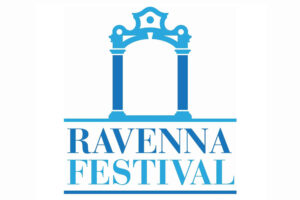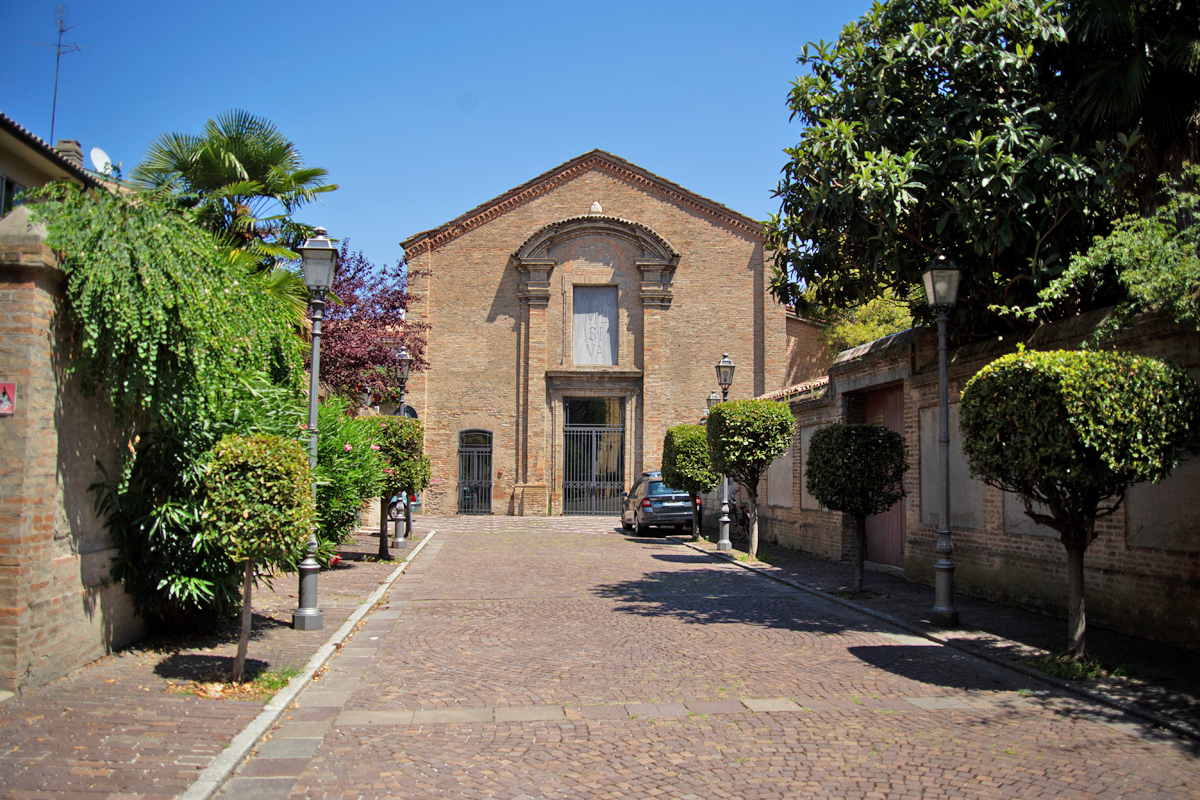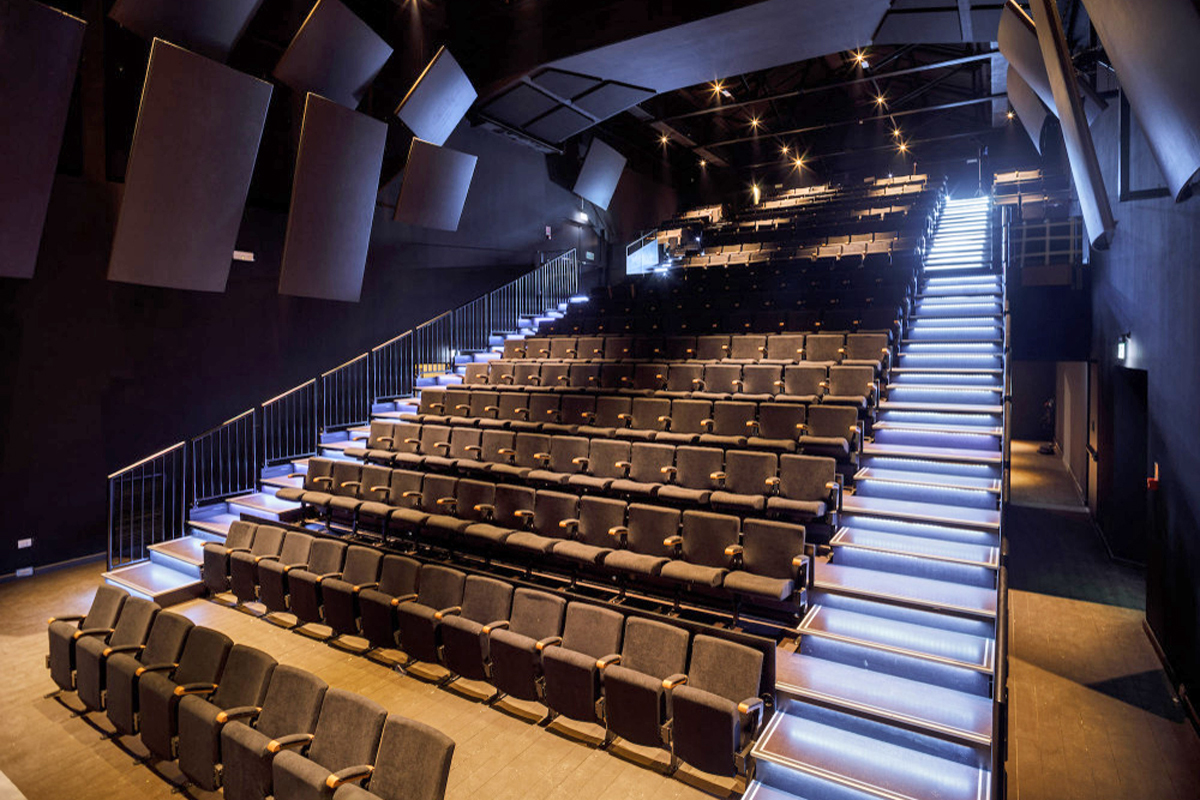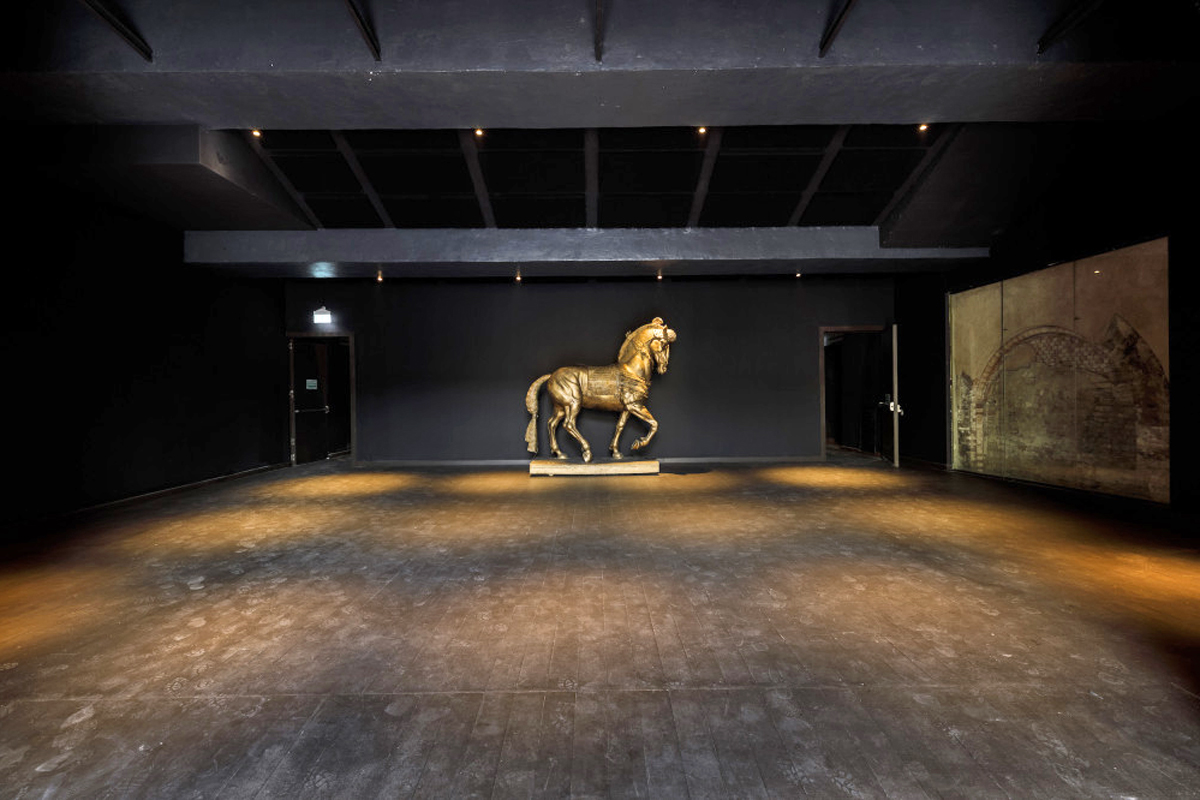Halfway between the Basilica of Sant’Apollinare Nuovo and the MAR – Ravenna Art Museum is one of the two historical theatres of Ravenna.
Housed inside an ancient medieval church dating back to the 13th century AD, the LUIGI RASI THEATRE is today a very lively cultural place, and is at the core of most of the activities of the programme curated by Ravenna Teatro (see focus), as well as of different kinds of festivals and workshops related to prose and contemporary expression.
Previously a church, then a theatre…
This theatre was originally a monastic church dedicated to Saint Clare, built in 1255 next to the convent of the Poor Clares on behalf of the noblewoman Chiara da Polenta and on the remains of a former religious building known as Church of Santo Stefano in Fundamento.
Rebuilt in the 18th century on a design by architect Camillo Morigia, in 1805 the church was deconsecrated after the Napoleonic looting of art.
At first, it became a riding school, then, at the end of the 19th century (1874) it was converted into a theatre, as Accademia Filodrammatica requested the concession of the building.
The new theatre was inaugurated in 1892 and dedicated to the famous actor and playwright from Ravenna Luigi Rasi in 1919. We owe great works to him, such as the transcription of Aristophanes’ Pluto and Sophocles’ Antigone
Closed in 1959 for restoration works, the theatre reopened in the ’70s.
Since 1991, the theatre has been the headquarters of Ravenna Teatro, founded by the companies Teatro delle Albe and Drammatico Vegetale.
A step back in time
The only elements of the old church of Santa Chiara still remaining today are the facade (partly a result of an intervention carried out later) – the entrance of the theatre – and the stage, obtained from the apse. The latter once housed precious frescoes, which were then removed and restored and are visible today in the Ravenna National Museum.
The frescoes depict the histories of the Salvation and Exhaltation of the Cross, and were realised by Pietro da Rimini, very productive artist of Giotto’s school.










